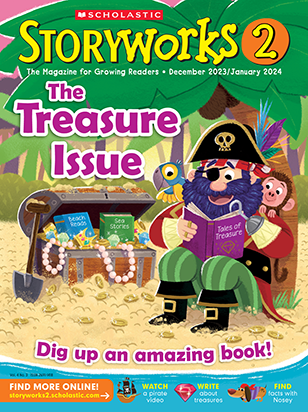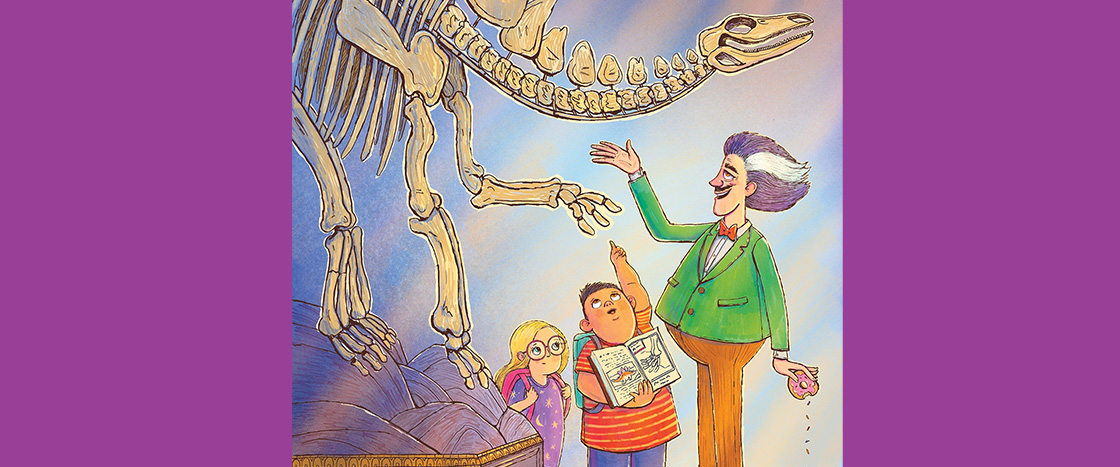The sprinkles lead us back to the museum. They go past the stegosaurus skeleton, down a staircase and . . . then the trail stops. We hear footsteps on the stairs below us.
“Who’s there?” Ruby asks. A man walks up the stairs.
“I’m Doug, the janitor,” the man says. “Someone keeps making a mess with these sprinkles. I’m mopping them up. You’d think this was a bakery, not a museum.”
“Do you remember where the trail of sprinkles was going? We were following it to try to find some missing bones,” I say.
“I don’t remember,” Doug says.
“What do we do now?” Ruby asks.
I have an idea. “Pickles!” I say. “He can sniff out food anywhere!”
Ruby, Doug, and I run to the security office. We tell Mindy what happened. Then Mindy, Pickles, Doug, Ruby, and I run back to the stairs where the trail of sprinkles stopped. Pickles starts sniffing. We follow him down a hallway.
He leads us into a dark room. In the corner, I see a glowing computer on a desk. The screen says, “For sale: stegosaurus skeleton.”
Next to the computer is something huge covered in a sheet. I pull off the sheet. Under it is a stegosaurus skeleton!
There are three toes on the back feet and five toes on the front feet, just like the book said.
“This is the real skeleton! The one upstairs is fake. It’s phony! Someone has been replacing the real bones with fake ones made of clay so they can sell the real skeleton. But they made a mistake when they made the fake bones. They didn’t put the right number of toes on the front feet,” I say. Everyone gasps.
“Who was it?” Mindy says. Pickles sniffs at some sprinkles by the skeleton. Professor Rex pokes his head out from under the desk.
“It was him!” I shout.
“You annoying kids! If you hadn’t snooped around, I would have been rich!” Professor Rex says.
“Come with me, Professor Rex,” Mindy says. We walk to the office of the museum director. I tell her everything.
“You are fired!” she says to Professor Rex. Then she looks at me and Ruby.
“How can I ever repay you and thank you?” she says.
“Well, aren’t you going to need a new tour guide now that Professor Rex is gone? Maybe Ruby and I could do it?” I say.
“You clearly know a lot about dinosaurs. You’re hired!” the museum director says.
“Awesome!” Ruby and I say together.

